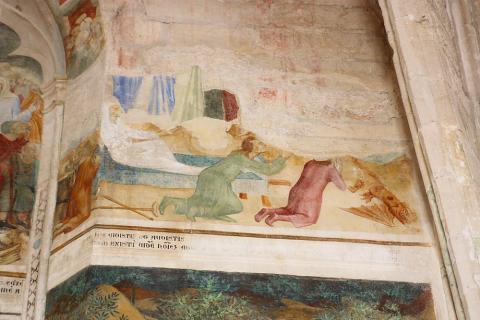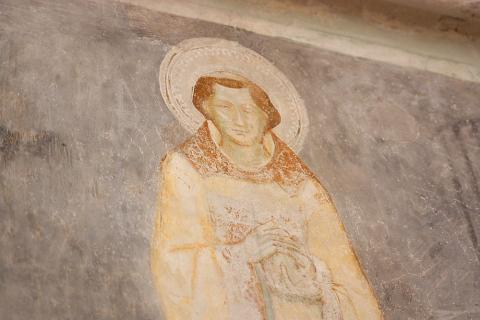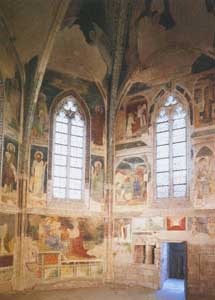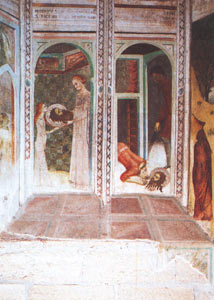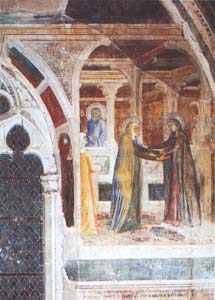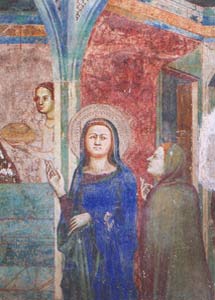When Pope Innocent VI transformed the palace he had built as a cardinal into a Carthusian monastery, he wanted to give the Carthusian fathers a special room – the Tinel, or dining room, with a small chapel next to it. In the chapel he commissioned paintings of the life of Saint John the Baptist, the precursor, who lived in the desert.
These paintings are attributed to the artist Matteo Giovannetti. Receipts from pontifical accounting records for the year 1355 refer to painting work "at the palace in Villeneuve" done by Matheus pictor. Matheus pictor is Matteo from Viterbo, Matteo Giovannetti, a priest and painter.
The frameworks which encase each of the sequences of the tale form a unified architectural trompe-l'œil decor which unfolds around the chapel. The vaulted ceiling and the upper registers are painted with a magnificent midnight blue and emerald green sky, dotted with pink clouds and peopled with angels, most of which has unfortunately disappeared.
Matteo Giovannetti was in advance in the explorations in painting of perspective that were to come in the next century.
Saint John the Baptist, one of the most interesting paintings, where we see the pope (his face has vanished) before the Madonna (above left). Note the trompe-l'œil balcony on which the pontiff is kneeling. The Beheading of John (right).
The Visitation (below left). Through a slightly opened door on the left a servant is present at the Virgin’s visit to Saint Elizabeth. The window frame has been included in the perspective of the painted scene. The Birth of John, detail (right). The Virgin is with the midwife while a servant brings food to the new mother. Example of the familiar, narrative style and tone adopted by Matteo Giovannetti.




